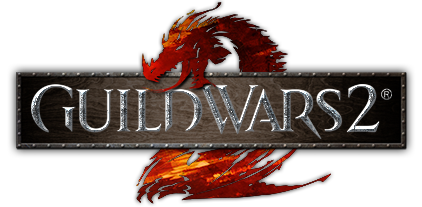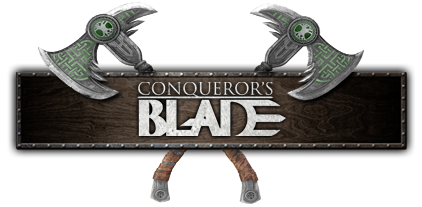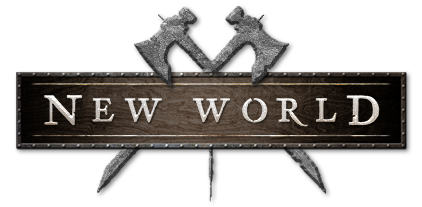The Tank - An RvR Essential
By: Korzak
The Tank – An RvR Essential
Guide and Opinion by Korzak
Tanks are an integral part of any RvR group, providing a strong front line to a party as well as aiding in damage and protecting less hardy allies. All tanks have several core abilities that allow them to assist their groups, as well as specialized abilities and attacks that make them more than just a hard target to kill. The question has arisen, occasionally, as to what separates a good tank from a bad one in RvR, and while the answer may seem clear cut to veteran tanks, it may not be so apparent to newer players.
Core Abilities
All tanks in Warhammer Online have four shared core abilities, all of which are useful in RvR, and two of which should be considered essential. These abilities are Guard, Challenge, Taunt and Hold the Line, and when used correctly, all can make the difference between success and utter failure.
Tanks receive the Guard ability at career rank 10, and should begin practicing its use as soon as they receive it. The Guard ability reduces the amount of hate generated by the character being guarded, but also splits any damage they take with the tank that is guarding them. This second facet is most important in RvR and is one of the primary features of any of the tank classes. As tanks are inherently very resilient and are easily able to stack toughness and wounds, being able to split the damage of another party member allows them to reinforce their group in a way that no other class can. Whether Guard is applied to a healer such as a Rune Priest or Zealot, or to a damage dealing class such as a Slayer or Sorcerer, a tank should always have the Guard ability active whenever they are in a group. An important thing to remember is that Guard is only in effect while the tank and their guarded target are within 30 feet of each other. This has coined the term 'Guard-Bot', as often a tank will be recruited to follow another player around just to guard them. As a player becomes more comfortable with their role as a tank, Guard can be employed in slightly more advanced ways, such as the technique of 'floating' a guard from one player to another as the enemy shifts their focus. If done correctly, this will allow a group to stay alive much longer against a coordinated opponent.
At career rank 20, all tank classes receive the Challenge ability. At first glance, Challenge appears to be only useful in PvE, to control multiple monsters. While it is very useful for that, its function in RvR should not be overlooked. In addition to forcing monsters to hit the tank, the description also indicates that all opponents affected by Challenge will have their damage reduced by 30%. This effect makes Challenge one of the keys to being an effective tank. When charging an enemy force, Challenge is a great ability to lead off with, as it will significantly impact the amount of damage the enemy force can deal to one's allies. Challenge should then be applied to the main cluster of opponents, or to one or two particularly powerful enemies as often as it is available.
The third archetype specific ability granted to tanks is Taunt, which is actually the first to be received, at career rank 7. Taunt forces an opponent to attack you in PvE, which makes it a staple of tanking dungeons, but it also increases that damage that the tank deals to that opponent by 30%. This bonus only lasts until the target has hit the tank three times, or 15 seconds, but during that period the tank can often times severely injure or possibly kill their target. This ability is particularly effective for tanks that are outfitted to deal damage.
Also at career rank 10, all tanks gain the Hold the Line ability. Hold the Line can only be performed while the tank is holding a shield, but when used increases the tanks ability to defend against ranged and magical attacks by 45%. This ability also increases the dodge and disrupt rates of all allies behind them by 15%, and it may be stacked up to three times. Hold the Line can be incredibly effective in a tank wall while defending or assaulting a keep, or against a bomb-group or enemy force with a great number of ranged or caster-type members.
Crowd Control
Once a player understands the uses of the core tank abilities, their next step should be to learn the correct application of Crowd Control, or CC. All tank classes have a number of Crowd Control abilities, such as roots, snares, knockdowns, knockbacks and staggers. The most important aspect of CC to remember is that all forms of it except snares trigger an immunity timer. There are at least three separate timers, one for roots, one for knockbacks and one for knockdowns and staggers. Because of these timers, it is important for a tank to remember not to lay down all their available Crowd Control at the beginning of a fight, as that could make the rest of the fight much more difficult.
Of the CC abilities, possibly the most effective, yet hardest to master is the knockback. Knockbacks are effective for separating a player from their group, in order to burn them down faster, for separating a tank from their guarded target, or for giving an ally a little space to breath, to name a few. While being very powerful, knockbacks can also be a source of frustration for allied players if not used correctly, so it might be said that the only thing better than knowing when to use is a knockback is knowing when not to use one. Much of the time, the correct use of a punt will depend upon the strength of the tank's group, as well as the strength of the opposing group. It may not be a good idea, for instance, to punt a bomb-sorcerer into one's healers, as that could result in much cursing and loss of life. Another time to refrain from knockback is when multiple allied melees are bringing down a particularly difficult enemy healer. Knocking that healer back does nothing but buy them time to get ahead on their heals and make a run for safety.
Target Priority
Because of their ability to outlast many of their allies, tanks are not only the perfect candidate to wade into a melee, they are expected to. When a tank has practiced the application of all their core abilities, and knows the correct use for the Crowd Control, their next objective is to learn what targets to attack. Generally, a tank is not designed to deal a great deal of damage, so their targets should be carefully chosen so as to apply the damage they do have most effectively. Healers, particularly those of the less hardy variety such as Zealots and Archmages, should be high on the list, while tanks and tough melee damage dealers such as Marauders should be Crowd Controlled or just bypassed. A tank that knows what targets to assault can make the greatest difference for a group, and is one of the marks of a player that understands their function on the battlefield.
Opinion: DPS/Twohander vs Sword & Board
In the recent months, I've been asked regularly what the advantages and disadvantages of fighting with a twohander are in comparison to the typical sword & board style of tanking. To any that know me and have played along side me to any extent, I think it's fairly obvious that I greatly prefer the damage and abilities associated with the twohander. Many newer players ask me when I decided to start using the twohander and give up the shield, if I waited till renown rank 50 or 60. The answer is that I started using a twohander in RvR at rank 5 or 6, whenever the first was available, and I haven't used a shield in RvR since then. My opinion is that if I find myself outliving all my allies after doing my job Guarding, Challenging and Crowd Controlling the enemy to the best of my abilities, it would be selfish to hide behind my shield and live while my friends lay dying in pools of their own blood. In fact, the fight may not have ended the same if I'd been able to deal more damage to my enemies. So my belief is that if, as a tank, you can manage to maintain a reasonable degree of survivability, which is up to you to determine, using a twohander is the better approach to RvR, especially in a small group situation.
I'll cover the advantages of the twohander first, but be aware that these are fairly specific to the Ironbreaker, and other classes may see more or less benefit from using a great weapon. The first advantage of the twohander is that it does more damage. This seems like a no-brainer, but when you roll into a group of enemies and drop a healer in a handful of swings the impact can be huge. Not only will that healer be dead, but they will also be more wary of you in the future, running sooner and healing less. The second is that the great weapon opens up a few abilities for some classes that are very powerful and can make those classes more useful in certain situations. For example, the Ironbreaker gains access to Cave-In when using a twohander, which is an on-demand 3 second knockdown that also deals damage over time to the target. And finally, the third advantage of a twohander, is that it just looks damn cool.
For disadvantages, while I wish I could say there are none, I do have a few. First off, the shield makes a massive difference in the survivability of a tank. The main fact that I don't think people really wrap their heads around is that Block chance applies to all incoming attack types. Magic. Ranged. Melee. All three of those are effected by the Block chance. Disrupt, Dodge and Parry each apply to one particular attack type. Because of this, the simple addition of a shield to a tank makes them much more survivable, as well as giving them access to certain abilities that can only be used with a shield, such as Hold the Line.
All in all, it's up to each individual player to decide what approach they feel is more effective for them. If someone tells you that you are required to use a shield to RvR, then don't bother to group with them because they're incompetent and will probably not do anything worth being part of anyway. It works the other way as well, so even though I think using a great weapon is the best thing ever, that's not especially true and shouldn't be looked at as the gospel of tanking.
Conclusion
Tanks are an essential part of a successful RvR group. A tank that knows, understands and applies their abilities in the correct manner will be an incredible boon to a party, but a tank that doesn't will simply be baggage. Whether using a twohander or sword & board, a tank that employs their core abilities such as Guard and Challenge, knows how to utilize their Crowd Control effectively, and can quickly determine what targets should have priority will be welcomed to any group and will play a major roll in that group's success.
If you have any questions about this writeup, please feel free to contact me in game. I'm usually more than happy to help people with questions, or to refer them to others who I think would have better answers than myself.

























